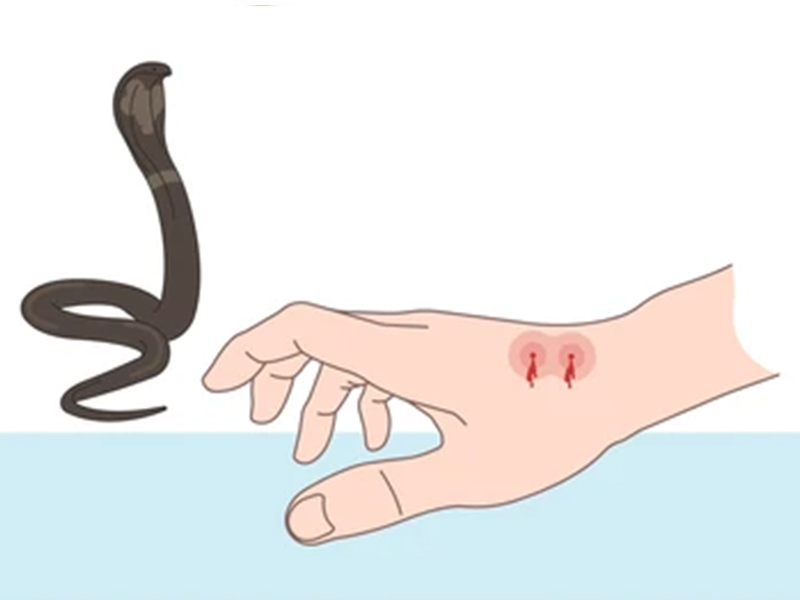Service
Snakebite

Snakebite refers to a bite inflicted by a snake, which can be either venomous or non-venomous. Venomous snakebites are medical emergencies requiring prompt medical attention. Envenoming, the process of venom injection, can lead to severe complications, including paralysis, bleeding disorders, kidney failure, and local tissue damage.
Symptoms of Snakebite Envenoming
- Local Effects : Pain, swelling, redness, blistering, and tissue damage at the bite site.
Systemic Effects
- Neurological : Weakness, dizziness, muscle twitching, paralysis (including respiratory muscles).
- Cardiovascular : Low blood pressure, rapid heart rate, abnormal blood clotting, bleeding.
- Other : Nausea, vomiting, diarrhea, difficulty breathing, and in severe cases, kidney failure.
First Aid for Snakebites
- Move Away : Immediately move away from the snake.
- Stay Calm : Keep the victim calm and still.
- Immobilize : Keep the bitten limb still, preferably splinted.
- Remove Restraints : Remove jewelry, watches, or tight clothing before swelling starts.
- Clean the Wound : Gently wash the bite area with soap and water.
- Transport to Hospital : Transport the victim to the nearest medical facility as quickly as possible.
- Avoid Traditional First Aid : Do not apply a tourniquet, cut the bite, or apply ice.
- Monitor Breathing : Ensure the victim's airway is open and breathing is adequate, be prepared to provide resuscitation if needed.
Important Considerations
- Antivenom : The primary treatment for venomous snakebites is antivenom, a specific antidote that neutralizes the venom.
- Observation : Victims of suspected snakebites are often observed in a hospital setting for up to 48 hours to monitor for the development of systemic toxicity and the need for antivenom.
- Prevention : Prevention is key. Avoid disturbing snakes, be cautious in areas where snakes are likely to be present, and wear appropriate footwear and clothing when in such areas.
